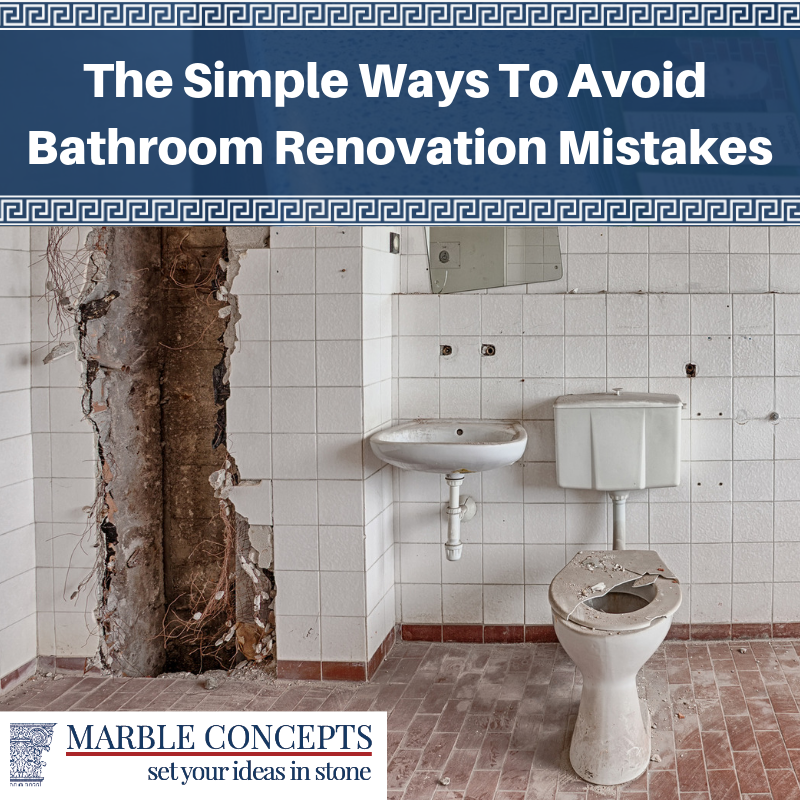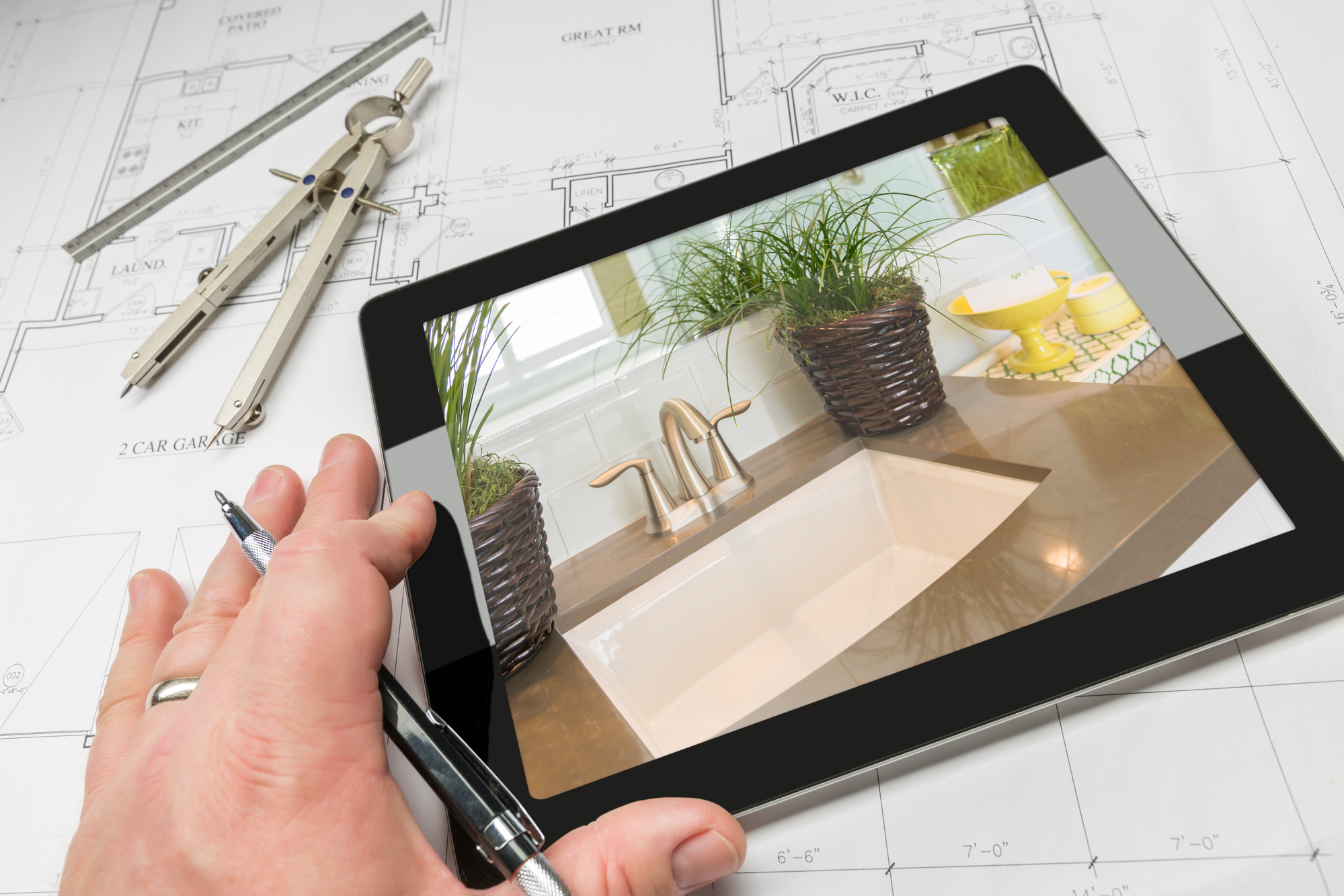
There are simple ways to avoid bathroom renovation mistakes. In reality, it all rests on being super organized and aware of the pitfalls that come with any renovation. In order to avoid mistakes and setbacks with bathroom renovations, here are some simple ways to steer clear of them.
1. Detailed Plan
Before actually initiating a bathroom renovation and going full force with demolition, either draw up a detailed plan of your own or consult with a contractor or designer to help you configure a plan or layout. Measurements are crucial. Measure walls, flooring areas, and other spaces that may require expansion, enclosure or other changes.
You want your plan outlined on paper or in a software program that displays what you want to accomplish renovation wise. If there is involvement with framing, relocating or moving walls, windows and doors as well as redirecting electrical wiring and plumbing, all these critical particulars need to be considered and included in the plan. Also, allow for the placement of exhaust fans, infrared heat lamps, fixtures, lighting, a toilet, tub, shower enclosure, vanities, shelving, mirrors, and any other decorative features.
Just remember, if you plan on relocating showers, sinks, toilets, and tubs from their original placements, your renovation costs will immediately increase and your plan will have to include those changes. If at all possible, keep these fixtures in place to simplify your plan and save on new plumbing costs.
2. Budgeting
A bathroom renovation budget goes right along with a workable design plan. You don’t want to make the mistake of being short on funds when your renovation is in full swing mode. Bathroom renovation costs have soared and are averaging anywhere from $15,000 and up, so planning for a bathroom renovation involves saving the funds, applying for a home improvement loan, or a personal loan. Doing the work yourself (if you are able) will help save on costs, but even if you do that, you still may have to contend with permits and other safety precautions as well as unforeseen setbacks with the renovation that will add to the expense.
In order to avoid the problems with budget overruns and unanticipated expenses with your renovation, plan on setting aside at least 10 to 15 percent more into your total renovation budget. This reserve amount should cover any additional expenses that may or may not arise.
3. Contractors
If you plan on using a contractor to complete your bathroom renovation, make sure you establish a contract that is fixed-price. You don’t want to make mistakes as to what is expected of the contractor and what has been agreed on to complete in a certain amount of time. Make sure the contract includes the contractor’s fees to do the work along with a listing of the materials and costs. Also, include a change order which constitutes any work that may be added or removed, along with any changes in project completion dates. A contract will help avoid those issues and protect your interests. You don’t want to get caught with unexpected construction glitches and increased material prices that require totally different renovation changes before the original work has been finished.
In reference to contractors, you may think that you are saving money by going with one who provides you with a low bid. Don’t be fooled into thinking that the low bidder is the best candidate for your renovation. They may lack the experience with bathroom renovations. They may also lack reliable references, licensing, insurance, and business ethics, plus they are likely to produce low quality work that requires a second go-around with a true professional. Don’t make the mistake of hiring unlicensed individuals, particularly for electrical and plumbing installations. Their work requires permits and must be performed to code.
4. Materials Acquisition
If you are renovating a bathroom on your own or if you have hired a reputable contractor, you definitely want to acquire the most suitable and high-quality materials for your bathroom space. You don’t want to make the mistake of utilizing materials that are unable to withstand exposure to moisture. They will likely deteriorate, corrode, warp, rust and peel over time. A good contractor or design consultant will recommend bathroom fixtures and furnishings that are both rated for bathroom use and are resistant to moisture. The culprit with all bathroom areas is moisture and humidity buildup, so it is important to also include an in-ceiling exhaust fan that has a strong enough pull to eliminate accumulated moisture.
One more important aspect of material selection is jumping on products that are cheap and poorly made for the sake of saving money. If you can find top-rated and cost-saving materials at a lesser price through discounts and returned materials, that’s a viable alternative, but don’t skimp on materials that will degrade over time. In addition, just because a material is less expensive and looks attractive doesn’t mean it is going to be functional in your bathroom space. You might find an in-sink vanity that looks great on the outside but is made of cheap fiberboard that will weaken from moisture and break apart over time, plus it may just not work in the space where you want it to fit. So, be cautious with your choices. Think functionality above price and looks.
With the average costs of bathroom renovations running in the tens of thousands and up, mistakes can add to those costs. Planning is essential for any renovation. If you are unsure of where to start with your project and want to avoid the pitfalls of it all, fill out the contact form and an expert will get back to you with the answers you need to make your bathroom renovation successful.







